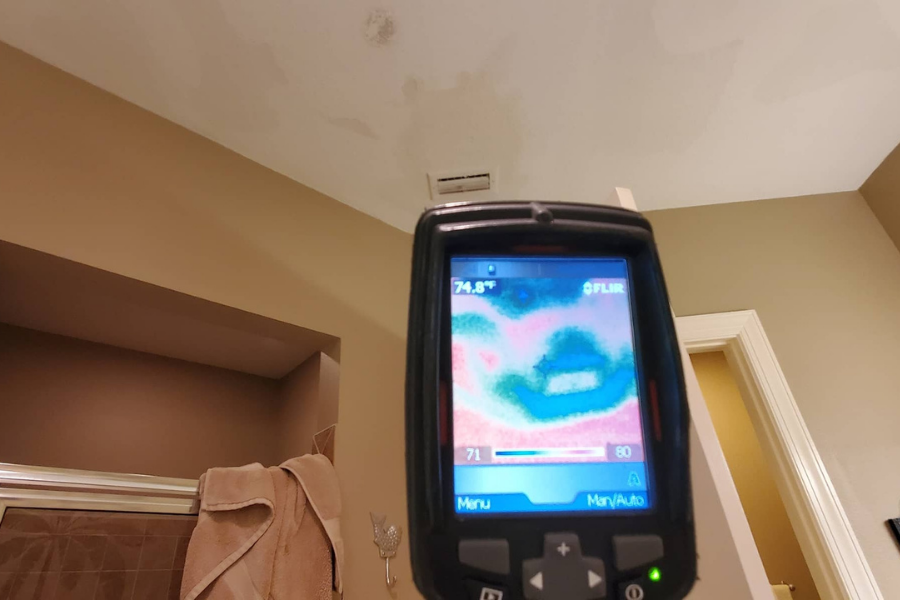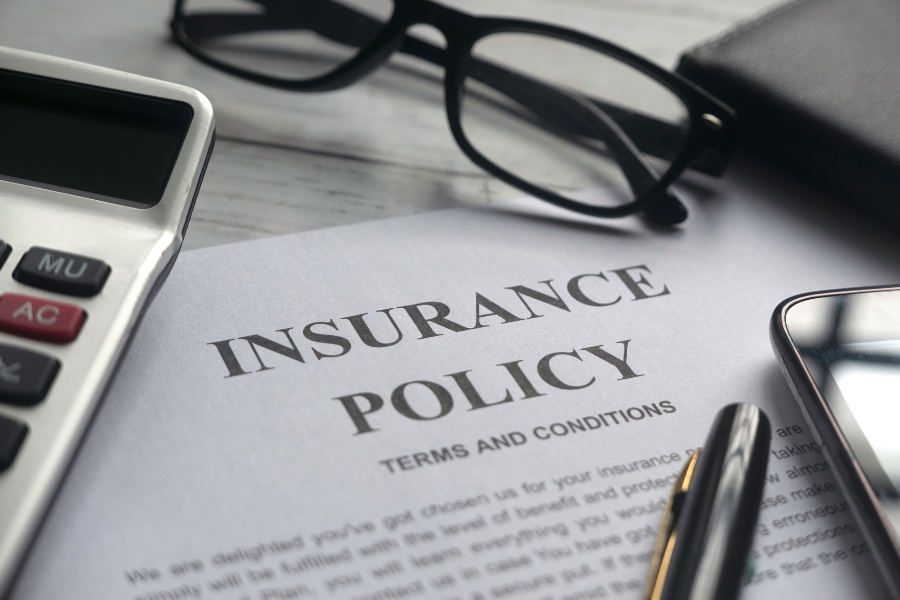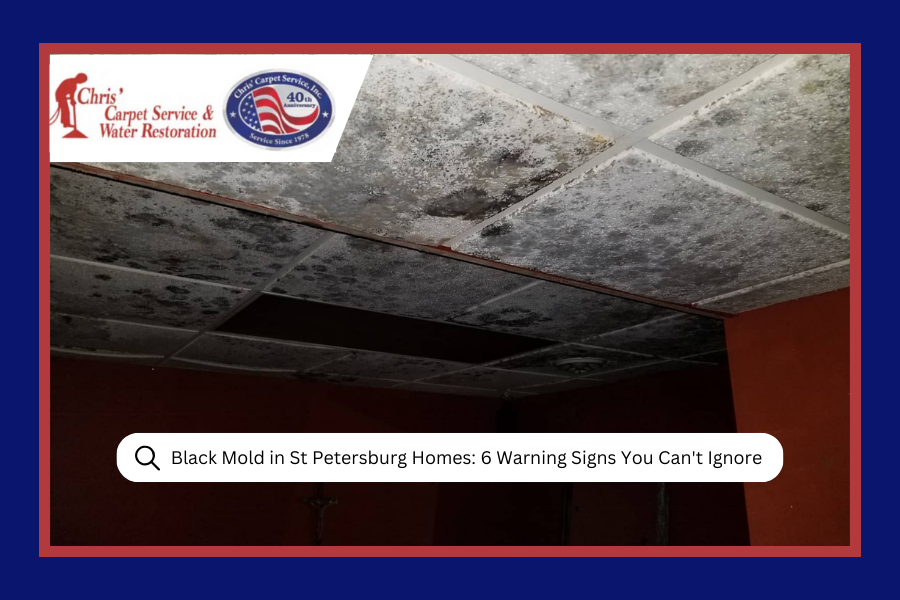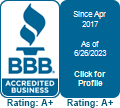What Is Water Damage Restoration and Does Insurance Cover It in Tampa Bay?
Jump to Section:
Living in the Tampa Bay area means dealing with some pretty intense weather. From summer thunderstorms that seem to come out of nowhere to hurricane season keeping us all on our toes, water has a way of showing up where it shouldn't. If you've ever walked into your home to find soggy carpets or water stains on your ceiling, you know that sinking feeling all too well.
The good news? Water damage restoration isn't as mysterious as it might seem, and your insurance might actually have your back. We at Chris' Carpet Service & Water Restoration have been helping Tampa Bay homeowners deal with water emergencies since 1976, so we've pretty much seen it all. Let's break down what water damage restoration actually involves and help you navigate the sometimes confusing world of insurance coverage.
What Exactly Is Water Damage Restoration?
Think of water damage restoration as emergency medicine for your home. When water invades spaces where it doesn't belong, it's not just about mopping up the mess and calling it a day. Water is sneaky – it seeps into places you can't see, creates perfect conditions for mold growth, and can cause structural problems if not handled properly.

Water damage restoration is a multi-step process that involves:
Assessment and Inspection
First things first, we need to figure out what we're dealing with. This means identifying the source of the water (is it clean water from a burst pipe or something nastier like sewage?), determining how far the damage has spread, and checking areas you might not think to look, like inside walls or under flooring.
Water Removal and Extraction
This is where the heavy-duty equipment comes in. We're talking industrial-grade pumps, vacuums, and extraction tools that can remove standing water quickly. The faster we get the water out, the better chance we have of preventing secondary damage.
Drying and Dehumidification
Here's where patience becomes a virtue. Even after we've removed all the visible water, moisture can still be lurking in materials like drywall, insulation, and subflooring. We use specialized drying equipment and monitor moisture levels until everything is completely dry.
Cleaning and Sanitizing
Water damage often brings unwelcome guests like bacteria and potential mold spores. We clean and sanitize all affected areas and belongings to make sure your home is safe and healthy.
Restoration and Repairs
Finally, we restore your home to its pre-damage condition. This might involve minor repairs like replacing drywall and painting, or it could require major reconstruction work (though we typically refer out the major rebuilds to trusted contractors in our network).
Need Emergency Water Damage Help?
Don't wait – water damage gets worse by the hour.
Call Now: (727) 888-5111Types of Water Damage We See in Tampa Bay
Water Damage Categories
Understanding the three categories of water damage helps determine the restoration approach and safety precautions needed.
Clean Water
From supply lines, overflowing tubs, or rainwater
Gray Water
Contains contaminants from dishwashers, washing machines, or toilet overflow
Black Water
Grossly contaminated water from sewage, flooding, or standing water with bacterial growth
Category 1: Clean Water Damage
This is the "best case scenario" if there is such a thing with water damage. We're talking about water from clean sources like:
- Broken supply lines
- Overflowing bathtubs or sinks (clean water only)
- Appliance malfunctions like washing machine overflows
- Rainwater that hasn't mixed with contaminants
Category 2: Gray Water Damage
This water has some level of contamination and could cause illness if consumed. Common sources include:
- Dishwasher or washing machine overflows
- Toilet overflow with urine (no feces)
- Sump pump failures (though these aren't common in our area)
- Seepage due to hydrostatic pressure
Category 3: Black Water Damage
This is the serious stuff – water that's grossly contaminated and could cause severe illness. Sources include:
- Sewage backup
- Flooding from rivers or streams
- Water from beyond the toilet bowl
- Standing water that's begun to support bacterial growth
Common Causes of Water Damage in Tampa Bay
Weather-Related Water Damage
Let's be honest – Mother Nature keeps us busy here in Florida. Our weather patterns create unique challenges:
Heavy Rainfall: Those afternoon thunderstorms can dump incredible amounts of water in a short time, overwhelming drainage systems and finding their way into homes through roof leaks, windows, and doors.
Hurricane Season: From June through November, we're always keeping one eye on the weather forecast. Hurricanes and tropical storms can cause flooding, roof damage, and wind-driven rain that finds every weak spot in your home's exterior.
Storm Surge: Coastal areas in Tampa Bay can experience storm surge during major weather events, bringing saltwater into homes and businesses.
Plumbing Failures
Even without extreme weather, plumbing problems are a fact of life:
- Burst pipes (especially older homes with aging plumbing)
- Water heater failures
- Toilet overflows
- Washing machine supply line breaks
Does Insurance Cover Water Damage Restoration in Tampa Bay?
Ah, the million-dollar question. The short answer is: it depends. Insurance coverage for water damage can be more complicated than figuring out Tampa traffic during rush hour, but let's break it down.

What's Typically Covered
Sudden and Accidental Water Damage: Most standard homeowners insurance policies cover water damage that's sudden and accidental. This includes:
- Burst pipes
- Appliance malfunctions
- Accidental overflow from plumbing fixtures
- Ice dam damage (not that we worry about that here!)
- Water damage from firefighting efforts
Wind-Driven Rain: If hurricane or storm winds drive rain through storm-damaged windows, doors, or roof, this is typically covered under your homeowners policy.
What's Usually NOT Covered
Flood Damage: Here's where it gets tricky. Standard homeowners insurance doesn't cover flood damage. You need separate flood insurance for that. In Tampa Bay, with our proximity to water and occasional storm surge, flood insurance is definitely worth considering.
Gradual Leaks: If water damage resulted from a slow leak that you should have noticed and fixed, insurance might not cover it. They consider this maintenance-related.
Sewer Backup: Most standard policies don't cover sewage backup unless you've specifically added that coverage. Given Tampa Bay's aging infrastructure in some areas, this coverage is worth considering. The Insurance Information Institute provides detailed information about different types of water damage coverage that can help you understand your policy better.
Groundwater Seepage: Water that seeps up through foundations or floors due to ground saturation typically isn't covered.
Understanding Your Florida Coverage
Florida has some specific considerations when it comes to water damage coverage:
Hurricane Deductibles: Many Florida policies have separate, higher deductibles for hurricane-related damage. Make sure you understand what yours is.
Flood Insurance: Given our geography, flood insurance through FEMA's National Flood Insurance Program might be a smart investment, even if you're not in a high-risk flood zone.
Sinkhole Coverage: Florida law requires insurers to offer sinkhole coverage, though you might need to add it separately.
The Insurance Claims Process: What to Expect
Document Everything
Before you touch anything, document the damage. Take photos and videos of everything affected. This documentation will be crucial for your claim.
Contact Your Insurance Company ASAP
Most policies require prompt notification of losses. Don't wait – call your insurance company as soon as it's safe to do so.
Mitigate Further Damage
Your policy likely requires you to take reasonable steps to prevent additional damage. This might mean covering holes in your roof with tarps or extracting standing water. Keep receipts for any emergency mitigation expenses.
Work with Restoration Professionals
Insurance companies often prefer working with restoration companies that understand the claims process. Our team at Chris' Carpet Service & Water Restoration has been handling insurance claims for decades and we use industry-standard Xactimate pricing to ensure accurate estimates.
Insurance Claim Checklist:
Immediate Actions:
- Ensure safety first
- Document damage with photos/videos
- Contact insurance company
- Contact restoration professionals
- Begin mitigation efforts
- Keep all receipts
During the Process:
- Stay in touch with your adjuster
- Get estimates from qualified contractors
- Review your policy coverage
- Keep detailed records of all communications
Why Professional Water Damage Restoration Matters
You might be thinking, "Can't I just rent some equipment and handle this myself?" Well, you could try, but here's why that's usually not the best idea:
Hidden Damage Detection
Water has a talent for hiding in places you'd never think to look. Professional restoration technicians have moisture detection equipment that can find water trapped in walls, under flooring, and in other hidden areas.
Mold Prevention
Florida's humidity creates perfect conditions for mold growth. Professional restoration includes proper drying techniques and monitoring to prevent mold problems down the road.
Insurance Requirements
Many insurance policies require professional restoration for coverage. DIY attempts might actually void your coverage.
Safety Considerations
Depending on the source of water damage, there might be safety hazards involved. Electrical issues, contaminated water, and structural concerns require professional assessment.
The Water Damage Restoration Timeline
| Time Frame | Restoration Phase | What Happens |
|---|---|---|
| Hours 1-24 | Emergency Response | Standing water extraction, drying process begins. Every minute counts! |
| Days 1-3 | Drying and Monitoring | Equipment runs continuously, moisture levels monitored and adjusted |
| Days 3-7 | Completion of Drying | Most drying processes complete (varies by extent and materials) |
| Week 2+ | Restoration | Replace drywall, flooring, and other damaged materials |
Choosing a Water Damage Restoration Company in Tampa Bay
When you're dealing with water damage, you need a company that can respond quickly and handle the job right. Here's what to look for:
Certifications and Training
Look for IICRC (Institute of Inspection, Cleaning and Restoration Certification) certified technicians. These certifications ensure that the restoration team follows industry standards.
24/7 Emergency Response
Water damage doesn't wait for business hours. You need a company that can respond immediately, day or night.
Insurance Experience
Choose a company experienced in working with insurance claims. They should understand the process and be able to work directly with your adjuster.
Local Knowledge
Tampa Bay has unique challenges. A local company like us at Chris' Carpet Service & Water Restoration understands our weather patterns, building types, and common issues specific to our area.
At Chris' Carpet Service & Water Restoration, we've been serving Tampa Bay homeowners since 1976. We're IICRC certified, available 24/7, and experienced in handling insurance claims. Most importantly, we're your neighbors – we understand the unique challenges of living in the Tampa Bay area.
Prevention Tips for Tampa Bay Homeowners
While you can't prevent every water emergency, you can reduce your risk:
Regular Maintenance
- Inspect your roof regularly, especially before hurricane season
- Clean gutters and downspouts
- Check appliance hoses and replace them every few years
- Know where your main water shut-off valve is located
Weather Preparedness
- Have a hurricane preparedness plan
- Keep emergency supplies on hand
- Consider installing storm shutters or impact windows
- Trim trees near your home to reduce wind damage risk
For more detailed information about preparing your home for Florida's weather challenges, the National Weather Service provides excellent resources on flood safety and preparedness that every Tampa Bay homeowner should review.
Monitor Your Home
- Check for signs of leaks regularly
- Pay attention to your water bill for unexplained increases
- Install water leak detection devices
- Keep humidity levels in check with proper ventilation
Understanding the full scope of restoration services can help you make informed decisions. You might also find our article about sewage backup causes and prevention helpful for comprehensive water damage preparedness, as sewage backups are one of the most dangerous types of water damage emergencies homeowners can face. Additionally, you can read about our water damage restoration case study to see how we handle real-world water damage emergencies in the Tampa Bay area.
Frequently Asked Questions About Water Damage Restoration and Insurance in Tampa Bay
Does homeowners insurance in Florida cover water damage from hurricanes differently than regular storms?
Yes, Florida policies often have separate hurricane deductibles that are higher than standard deductibles. Hurricane deductibles apply when the National Hurricane Center declares a hurricane watch or warning. Wind-driven rain during hurricanes is covered under homeowners policies, but storm surge flooding requires separate flood insurance.
How long does the insurance claims process typically take for water damage in Tampa Bay?
Most water damage claims in Florida are resolved within 30-90 days, but hurricane claims can take longer. Start restoration immediately while working with your adjuster. We handle all documentation and use Xactimate pricing software that most Florida insurers recognize, which helps avoid delays.
What should I do if my insurance company denies my water damage claim in Florida?
Act quickly but don't panic. Review the denial letter carefully and request a re-inspection if the adjuster missed hidden damage. If the denial seems unfair, consult with a public adjuster or attorney specializing in Florida insurance law. Many initially denied claims get approved after proper documentation.
Is mold remediation covered by insurance if it results from covered water damage in Florida's humid climate?
Coverage depends on your policy and response time. Mold from covered perils is often covered if professional remediation was prompt. However, if mold grows because water wasn't properly dried within 48-72 hours, insurance may deny coverage. Florida's humidity makes immediate professional response critical.
When Water Strikes, We're Here to Help
Water damage can feel overwhelming, but quick action makes all the difference. We at Chris' Carpet Service & Water Restoration have been helping Tampa Bay families for nearly five decades.
Don't let water damage turn into a bigger problem. Call us at (727) 888-5111 or visit our contact page for immediate emergency response.
Contact Us Today






